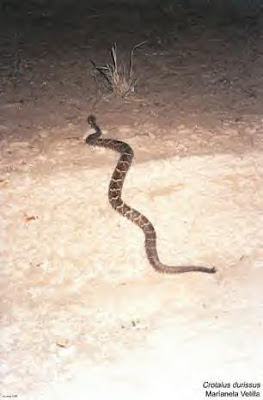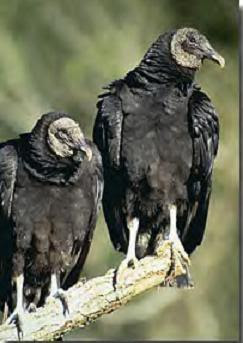copyright 2008 by Gary L. Pullman
To paraphrase Elizabeth Barrett Browning, in this post, we continue to ask of life, “How do I fear thee? Let me count the ways.”
 Rats
Rats. Why do they frighten? The answer is simple. They’re rodents. Oops. That’s circular reasoning. Okay. Try this. Rats are furtive. They hide, and they slink. They have beady eyes, and they’ll eat almost anything, from garbage to a newborn baby. They carry disease. They infected Europe with the bubonic plague that decimated a quarter of the continent’s population--or the fleas on them did. That’s right; rats have fleas, which is another reason they’re feared and detested. They eat crops. They have a reputation for cowardice and opportunism, which may or may not be deserved--attributing human characteristics to animals, even rats, is risky business except for figurative purposes. For all these reasons, and because they have sharp claws and teeth, and are fast on their feet, rats are, in horror fiction, as in life, bases of fear.
 Snakes
Snakes. Why do they frighten? The answer is simple. Snakes are in a class by themselves when it comes to objects of fear. They seem utterly alien, having neither limbs nor wings nor horns nor tusks nor even ears or snouts, and their eyes are, to borrow an apt phrase from William Butler Yeats, “as blank and pitiless as the sun.” Their gaze
looks evil. It is penetrating, and it lacks not only humanity but any sort of emotion. A cat or a dog can express sentiments, but not a snake. Its vocabulary is limited to hissing, just as its locomotion is restricted to slithering. It lives in the ground, hidden, and conceals itself in swamps or grasslands, where, unseen, it may strike, embedding its fangs in the foot or leg of an unsuspecting traveler. Many are poisonous, and most have painful bites. Serpents have presence. Their very existence, and even their graceful, sinuous movements, seems to embody evil. The absolutely alien, glaring-eyed snake is, in horror fiction, as in life, bases of fear.
 Tarantulas
Tarantulas. Why do they frighten? The answer is simple. They’re spiders. Oops. Another tautology. Spiders are hideous in appearance. What’s with all those legs, and why would an innocent creature need to have compound eyes or spin webs to catch unwary insects, wrapping them in silk cocoons for breakfast, lunch, dinner, and snacks? They spin, and they wait, wary, silent predators, to take the unwary by surprise, ambushing them or trapping them for food. Tarantulas are BIG spiders, as big as a man’s fist. The damned things are furry, too--and poisonous! Their gigantic statures multiplies the spider traits that people fear, making tarantulas, in horror fiction, as in life, bases for fear.
 Underground places
Underground places. Why do they frighten? The answer is simple. They’re underground. And they’re dark. Most likely, they’re also clammy. They may be inhabited by creepy creeping things: spiders and lizards and snakes. A tunnel may swarm with bats or rats. A cavern may be haunted by a ghost or a monster or a whole subhuman species of nasty cannibals, headhunters, or mutant thingamajigs. Caverns can be mazes, too. Finding one’s way out may be much more difficult than finding one’s way in--in fact, it might be downright impossible (which could account for the occasional human skull or skeleton one passes along the way through these dark, subterranean labyrinths). Catacombs are creepy and ghastly, because they’re full of skeletal remains, some clothed, others dressed in rags, and still others--the majority, perhaps--naked bones. There are men, women, and, alas, children. Some sleep upon low, narrow berths, others sit slumped in corners or along tunnel walls, and still others are used as decorations, their skulls adorning the arch of a doorway. Think of yourself in an ancient Egyptian pyramid, with all those massive tons of tomb overhead. If
that doesn’t make you claustrophobic, you’re ready to join the pharaoh in his or her sarcophagus. Underground places are reminders, too, of graves and tombs, and are, therefore,
mementos mori. Because underground places are close, dark, isolated, and damp, and they remind us of our eventual final resting places, they are, in horror fiction, as in life, bases for fear.
 Vultures. Why do they frighten? The answer is simple. They eat the dead. As children, when we chanced to spot vultures, we’d lie still on the ground, with our eyes open. The ungainly birds would start circling, descending with each revolution of their narrowing and narrowing gyre. When they’d descended to a height of about 20 feet, their salivary glands no doubt activated by what the birds hoped would be a feast, we’d leap to our feet and frighten these carrion feeders away. What a turn we must have given them! They’d thought we were dead, which is to say, from their perspective, food. Instead, they could have become our food (not that we ever wanted a snack bad enough to eat these particular eaters of the dead). Vultures have a reputation of being unclean (probably because of their fondness for road kill). They’re clumsy, and, let’s face it, these fowl are ugly. Because of their appearance and their eating habits, vultures are, in horror fiction, as in life, bases for fear.
Vultures. Why do they frighten? The answer is simple. They eat the dead. As children, when we chanced to spot vultures, we’d lie still on the ground, with our eyes open. The ungainly birds would start circling, descending with each revolution of their narrowing and narrowing gyre. When they’d descended to a height of about 20 feet, their salivary glands no doubt activated by what the birds hoped would be a feast, we’d leap to our feet and frighten these carrion feeders away. What a turn we must have given them! They’d thought we were dead, which is to say, from their perspective, food. Instead, they could have become our food (not that we ever wanted a snack bad enough to eat these particular eaters of the dead). Vultures have a reputation of being unclean (probably because of their fondness for road kill). They’re clumsy, and, let’s face it, these fowl are ugly. Because of their appearance and their eating habits, vultures are, in horror fiction, as in life, bases for fear.

Witches. Why do they frighten? The answer is simple. They’re in league with the devil himself, who empowers them to do his bidding. They are also his paramours. Medieval literature and Inquisition trials transcripts report witches--or women, at least, who were accused of being witches--as having testified that demon semen is ice cold and chilling to the very marrow of the bone. Demon seed causes bizarre offspring, too, legends claim. Some of the children of demons are feral; others are true imps. Rosemary’s baby had hooves and a tail and horns, and the union of a mortal woman with the devil is supposed to result, by some accounts, in the birth of the antichrist, who may or may not already be in our midst, waiting to usher in Armageddon. Because witches are the sexual and spiritual paramours of demons, they are, in horror fiction, as in life, bases for fear.
Zombies. Why do they frighten? The answer is simple. They are dead men walking, the living dead, the recipients of a curse much like that which was laid upon the Wandering Jew of legend or the ancient mariner of Samuel Taylor Coleridge’s celebrated poem. Fleshly automatons, they are just going through the paces of living, much like many of the living during the weekdays from 9:00 am to 5:00 pm (or whenever these working stiffs work their shifts). They are people without souls. They are the spiritually dead. True, according to legend and cinema, they’re not too bright, especially for creatures whose only sustenance is human brains, and they’re more than a little slow, both mentally and physically, and a whole lot clumsy. Still, there are apt to be hundreds of them, as cemeteries are repositories of many corpses. Worse yet, some among their hordes might have been a friend or a family member before they turned zombie creep. Zombies symbolize spiritual death, and they suggest that such a soulless state is possible for anyone--stranger, friend, family member, or, God forbid, even oneself; for these reasons, zombies, in horror fiction, are, as in life, bases of fear.
'Ere we part, let’s summarize our findings with regard to the nine bases of fear that were listed in this post:
- For many reasons, but especially because they have sharp claws and teeth and are fast on their feet, rats are, in horror fiction, as in life, bases of fear.
- The absolutely alien, glaring-eyed snake is, in horror fiction, as in life, a basis of fear.
- Gigantic stature multiplies the spider traits that people fear, making tarantulas, in horror fiction, as in life, bases for fear.
- Because underground places are close, dark, isolated, damp, and remind us of our eventual final resting places, they are, in horror fiction, as in life, bases for fear.
- Because of their appearance and the eating habits, vultures are, in horror fiction, as in life, bases for fear.
- Because witches are the sexual and spiritual paramours of demons, they are, in horror fiction, as in life, bases for fear.
- Zombies symbolize spiritual death, and they suggest that such a soulless state is possible for anyone--stranger, friend, family member, or, God forbid, even oneself; for these reasons, zombies, in horror fiction, are, as in life, bases of fear.
Source of photographs: U.S. Government Photos and Graphics









